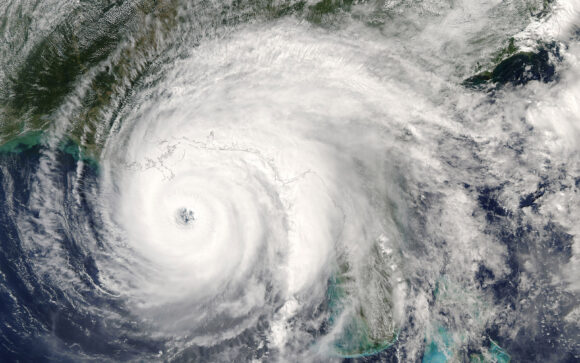Lloyd’s, the world’s leading marketplace for insurance and reinsurance, has launched disaster resilience vehicle with the United Nations Capital Development Fund (UNCDF) to deliver disaster risk financing to Small Island Developing States (SIDS) in the Pacific.
in partnership with the UNCDF, Lloyd’s, and Aon, the vehicle supports the Sustainable Markets Initiative (SMI) Insurance Task Force’s commitment made at COP26 to drive tangible action to support the resilience of climate vulnerable countries.
Supported by members of Lloyd’s Disaster Risk Facility, the Global Disaster Resilience Vehicle will enhance recovery and resilience, leveraging capacity from the global reinsurance market. The vehicle will leverage donor funds committed to the region and use local networks to provide exposure-based payments directly to climate-vulnerable communities.
Lloyd’s will work in partnership with the local industry to identify resilience needs and secure the necessary capacity to deliver coverage. This could mean doubling the total amount insured from $1,000 to $2,000 per policy per year, with up to 100% compensation per event.
Initially covering Fiji, Papua New Guinea and Samoa, the vehicle will respond to disasters caused by natural perils including tropical cyclone, earthquake, tsunami and flood – with the long-term aim of scaling and replicating the vehicle throughout the Pacific region as well as the Caribbean, Asia and Africa.
Building on Lloyd’s commitments set out through a memorandum of understanding (MoU) with the UNCDF in September 2023, Lloyd’s and Aon will support the scaling up of the UNCDF’s existing programs to close the protection gap for the populations in the Pacific Islands.
“The insurance industry has been engaged in disaster risk finance for decades and has an increasingly important role to play in providing capital and tailored investment solutions to build resilience,” commented John Neal, Lloyd’s CEO, in a statement. “Establishing this new vehicle reinforces the crucial role Lloyd’s and the re/insurance industry plays in supporting communities within the Pacific Islands to respond and recover quicker from disaster.”
“Providing access to risk capital to reinforce and augment the work of the UNCDF is an important step in helping the Pacific islands build resilience against natural disasters, and becomes even more important given the potential impacts of climate change,” said Dominic Christian, global chairman of Aon Reinsurance Solutions.
“Working with the UNCDF, Lloyd’s, and the DRF represents an exciting collaboration, and underpins our belief that combining our resources and expertise is the most efficient and effective way to develop an ecosystem for disaster risk financing that can benefit the countries and communities that need it most,” he added.
“UNCDF has a unique mandate to provide blended financing instruments to emerging economies, including climate-vulnerable SIDS to development challenges like impact of climate change and extreme weather events,” according to Pradeep Kurukulasuriya, Executive Secretary, UNCDF.
“Through a combination of grants, guarantees and concessional loans, UNCDF through its climate risk insurance programme partners, aims to support local market ecosystems to deliver sustainable solutions at the last mile to build the resilience and preparedness of vulnerable communities,” said Kurukulasuriya. “We are committed to working with the insurance and reinsurance industry to establish this investment vehicle that will be tested in the Pacific, replicated and scaled to other markets.”
Lloyd’s said additional benefits of the new vehicle include:
- Policyholders: Access to more efficiently priced products that provide relief. Access to affordable loan financing (0-1%). Capability to focus on resilience building with security of funding for post disaster recovery. Immediate access to funding has proven to improve the rate of recovery post disaster.
- Local insurers: Support to build capacity and markets; access to more efficient capital; improved product penetration.
- UNCDF: Support to leverage current program to improve impact with private sector support that will be sustainable.
- Donors: greater impact for the committed funds through localization of funding; and donor budget smoothing as private sector will provide response to unexpected disaster / needs; leverage the disaster risk funding to provide premium loan financing.
- Local governments: allow for more efficient budgeting and resilience building, removing the need for disaster response allocation.
- The Global Disaster Resilience Vehicle is focused to create local impact through payments directly to those affected by natural disasters.
- The basic insurance product will provide variable amounts of payout depending on the severity of the event directly to households.
- Premium financing will be through a loan facility initially started by UNCDF but to be ultimately financed by private sector banks.
Topics Auto Excess Surplus New Markets Lloyd's
Was this article valuable?
Here are more articles you may enjoy.



 Acrisure to Buy MGA Vave From Canopius
Acrisure to Buy MGA Vave From Canopius  State Farm Sued Over Policies Backed by Distressed Insurer PHL
State Farm Sued Over Policies Backed by Distressed Insurer PHL  Pierce Named CEO of GEICO as Combs Resigns
Pierce Named CEO of GEICO as Combs Resigns  Baldwin Group to Buy CAC Group for About $1B in Cash and Stock
Baldwin Group to Buy CAC Group for About $1B in Cash and Stock 

